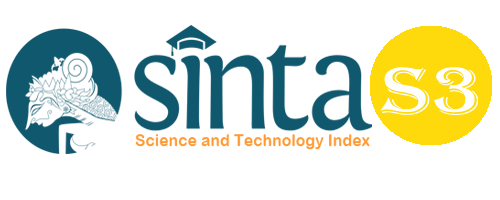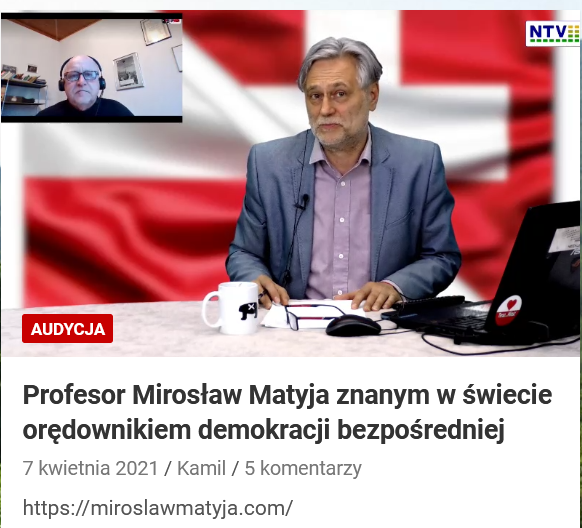Analysis of Fraudulent Financial Reporting Using the Fraud Triangle (Study Case: PT Tiga Pilar Sejahtera Tbk)
Abstract
This study aims to analyze PT Tiga Pilar Sejahtera Food Tbk (AISA)’s fraudulent financial reporting (FFR) in relation to the fraud triangle theory. This study uses a quantitative approach by analyzing secondary data obtained from AISA's financial statements during 2003-2017. The analysis will be carried out using Excel software to produce regression and variable correlation analyses. The research method uses the Beneish M-score model as FFR proxy and SAS No.99 fraud risk factor as fraud triangle proxies (pressure, opportunity, rationalization). The test results show that pressure, opportunity, and rationalization significantly influence AISA's scandal. The pressure factor is measured by financial target and external pressure indicators. The nature of industry indicator measures the opportunity factor, and the audit reports indicator measures the rationalization factor.
Keywords
Full Text:
PDFReferences
Association of Certified Fraud Examiners (ACFE). (2020). Report To The Nations. https://acfepublic.s3-us-west-2.amazonaws.com/2020-Report-to-the-Nations.pdf
Akbar, T. (2017). The Determination Of Fraudulent Financial Reporting Causes By Using Pentagon Theory On Manufacturing Companies In Indonesia. International Journal of Business, Economics and Law, 14.
American Institute of Certified Public Accountants (AICPA). (2002). Consideration of fraud in financial statement audit. Statement on auditing standards No. 99.
Beneish, MD (1999). The Detection of Earnings Manipulation. Financial Analysts Journal, 55(5), 24–36. https://doi.org/10.2469/faj.v55.n5.2296
Cressey, DR (1953). Other people's money; a study of the social psychology of embezzlement.
Demetriades, P., & Owusu-Agyei, S. (2021). Fraudulent financial reporting: an application of fraud diamond to Toshiba's accounting scandal.Journal of Financial Crime.
Diany, YA, & Ratmono, D. (2014). Determinants Of Financial Statement Fraud:Testing The Fraud Triangle Theory. Diponegoro Journal Of Accounting, 3(2), 1–9. http://ejournal-s1.undip.ac.id/index.php/accounting
Erns & Young (EY). (2020). Report on the Fact-Based Investigation of PT Tiga Pilar Sejahtera Food Tbk. https://www.idx.co.id/StaticData/NewsAndAnnouncement/ANNOUNCEMENTSTOCK/From_EREP/201903/6b2d1df1a4_1399994ba4.pdf
Ichsan, R. et al. (2021). Determinant of Sharia Bank's Financial Performance during the Covid-19 Pandemic. Budapest International Research and Critics Institute-Journal (BIRCI-Journal). P. 298-309.
Mafiana, A., Lindrianasari, L., & Yuztitya, A. (2016). Pendeteksian Kecurang Laporan Keuangan Menggunakan Fraud Diamond. Jurnal Bisnis dan Ekonomi, 231, 72-89.
Lepa, S. (2020). Statistical Significance: Testing. The International Encyclopedia of Media Psychology, 1-1111.
Sihombing, Kennedy Samuel dan Rahardjo, Shiddiq Nur. (2014). Analisis Fraud Diamond dalam Mendeteksi Financial Statement Fraud: Studi Empiris pada Perusahaan Manufaktur yang Terdaftar di Bursa Efek Indonesia (BEI) Tahun 2010- 2012. Diponegoro Journal of Accounting Vol. 03 No. 02. ISSN (Online): 2337- 3806.
Skousen, CJ, Smith, KR, & Wright, CJ (2009). Detecting and predicting financial statement fraud: The effectiveness of the fraud triangle and SAS No. 99. Advances in Financial Economics, 13, 53–81. https://doi.org/10.1108/S1569-3732(2009)0000013005
DOI: https://doi.org/10.33258/birci.v5i1.3791
Article Metrics
Abstract view : 271 timesPDF - 102 times
Refbacks
- There are currently no refbacks.

This work is licensed under a Creative Commons Attribution-ShareAlike 4.0 International License.

This work is licensed under a Creative Commons Attribution-ShareAlike 4.0 International License.

_.gif)

















_.gif)



